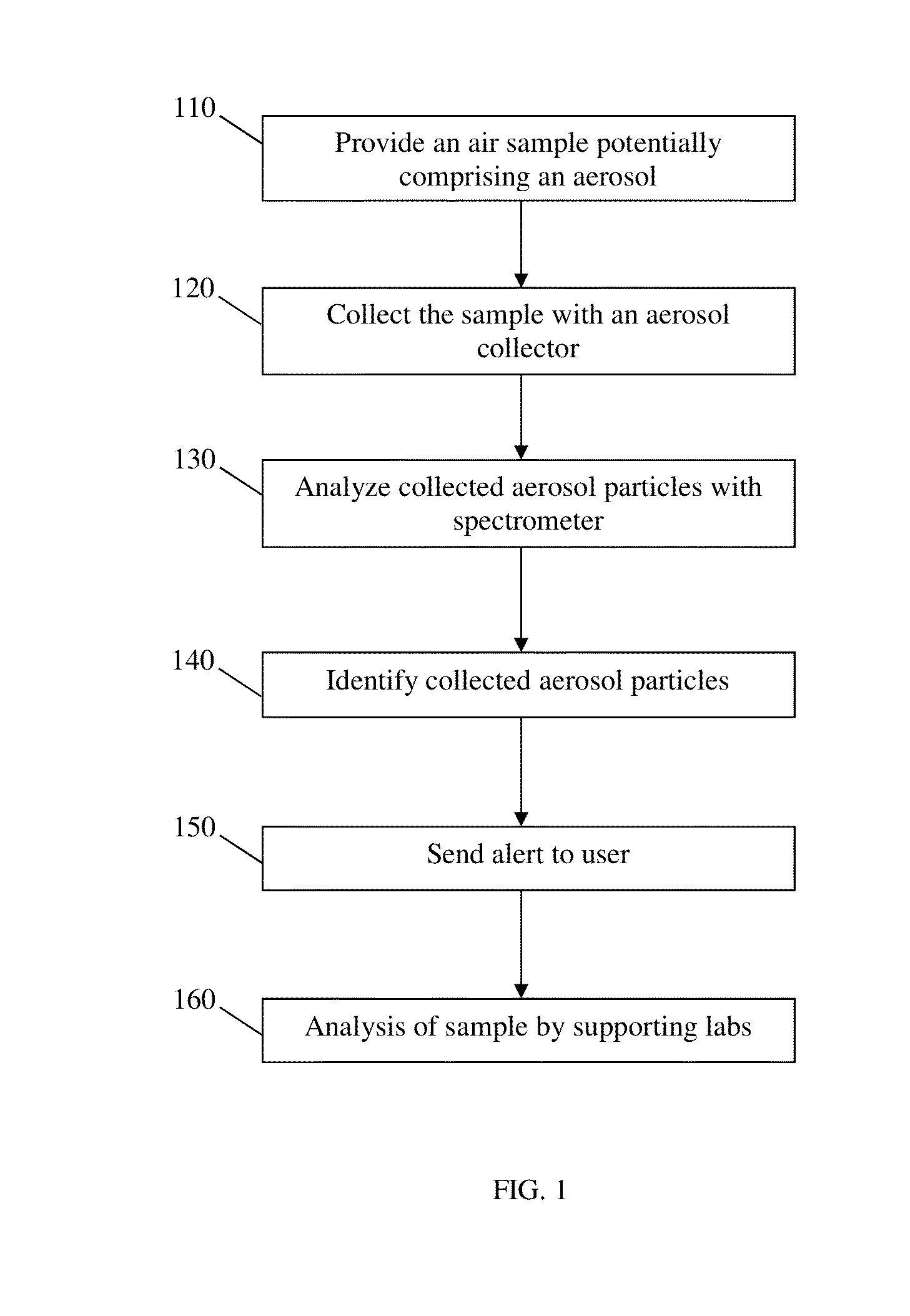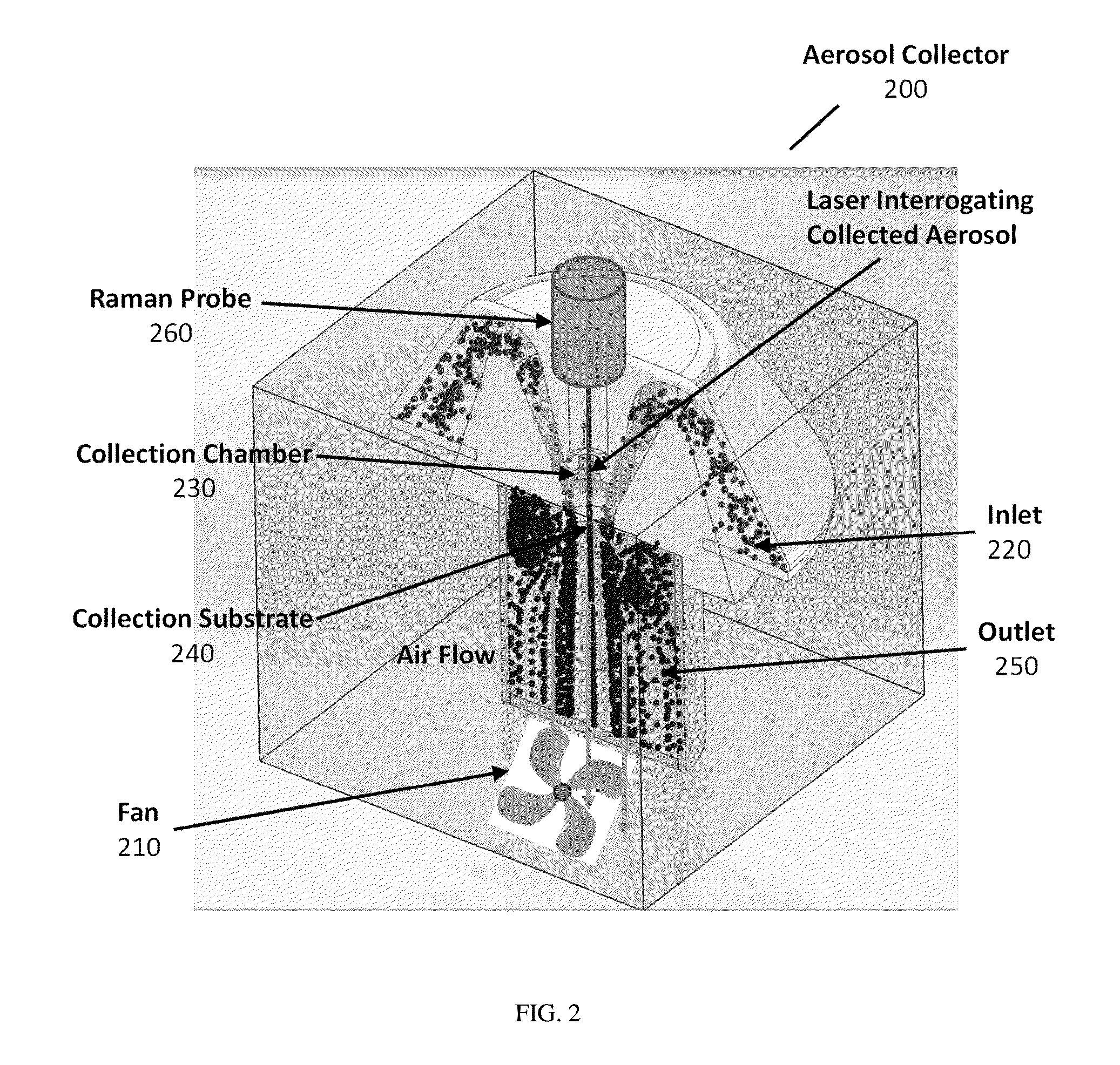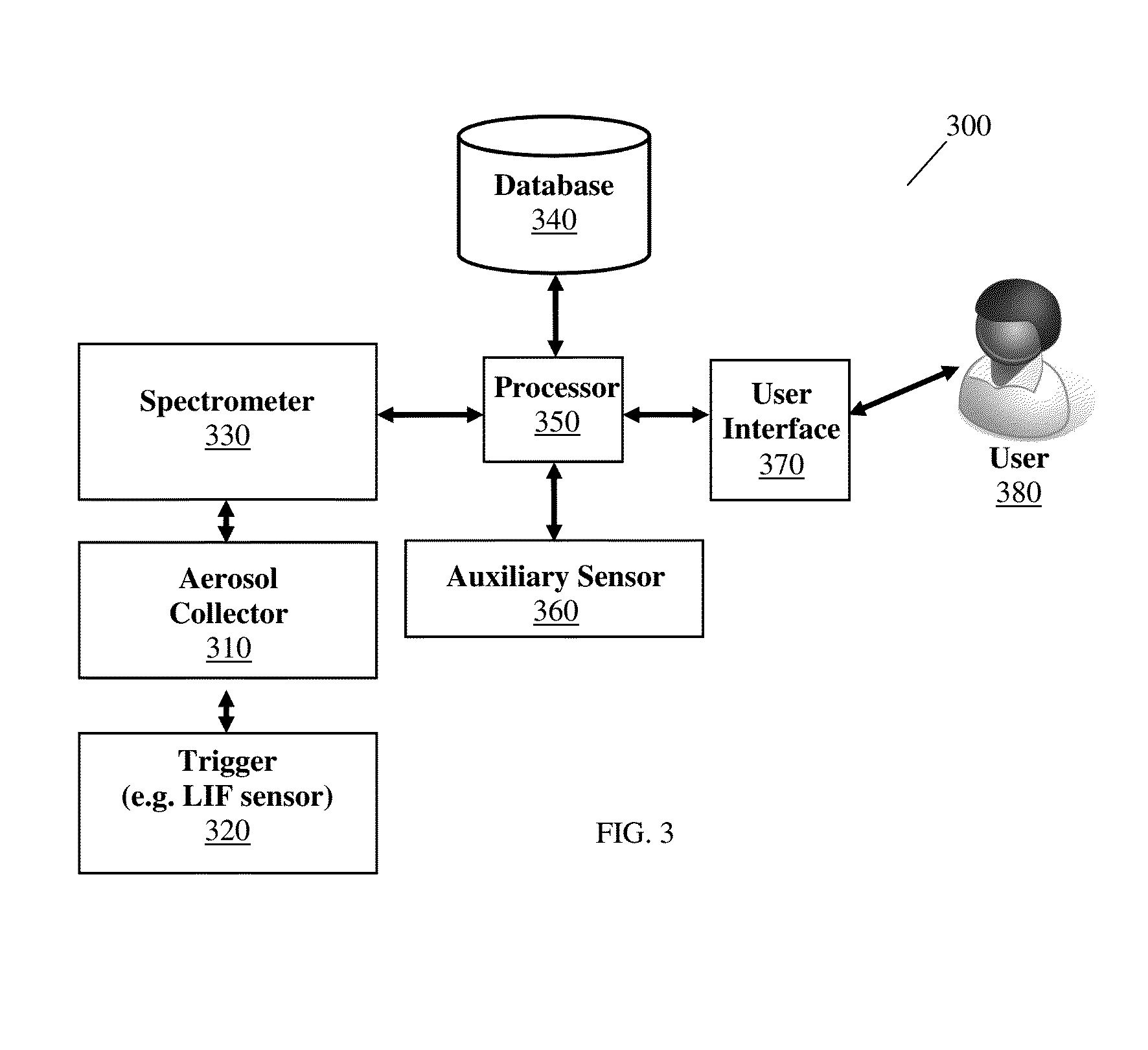Method, Device, And System For Aerosol Detection Of Chemical And Biological Threats
- Summary
- Abstract
- Description
- Claims
- Application Information
AI Technical Summary
Benefits of technology
Problems solved by technology
Method used
Image
Examples
Embodiment Construction
[0044]According to an embodiment is a device, method, and system for collecting, concentrating, detecting, and identifying an aerosolized chemical / biological warfare agent or threat chemical. According to one embodiment is a collection / detection system capable of detecting a chemical threat aerosol in near-real-time while allowing for subsequent analysis of the aerosol by a supporting laboratory to confirm the presence of a chemical threat. According to another embodiment is the integration of chemical aerosol detection capability with a detector system used to detect and collect biological aerosols in a manner that allows the integrated system to detect both chemical and biological threat aerosols. Addition of a near-real-time ion mobility spectrometry (“IMS”) based chemical vapor detector to the integrated chemical and biological aerosol detector system results in a detector system capable of detecting most chemical and biological threats to include chemical aerosols, biological a...
PUM
 Login to View More
Login to View More Abstract
Description
Claims
Application Information
 Login to View More
Login to View More - R&D
- Intellectual Property
- Life Sciences
- Materials
- Tech Scout
- Unparalleled Data Quality
- Higher Quality Content
- 60% Fewer Hallucinations
Browse by: Latest US Patents, China's latest patents, Technical Efficacy Thesaurus, Application Domain, Technology Topic, Popular Technical Reports.
© 2025 PatSnap. All rights reserved.Legal|Privacy policy|Modern Slavery Act Transparency Statement|Sitemap|About US| Contact US: help@patsnap.com



